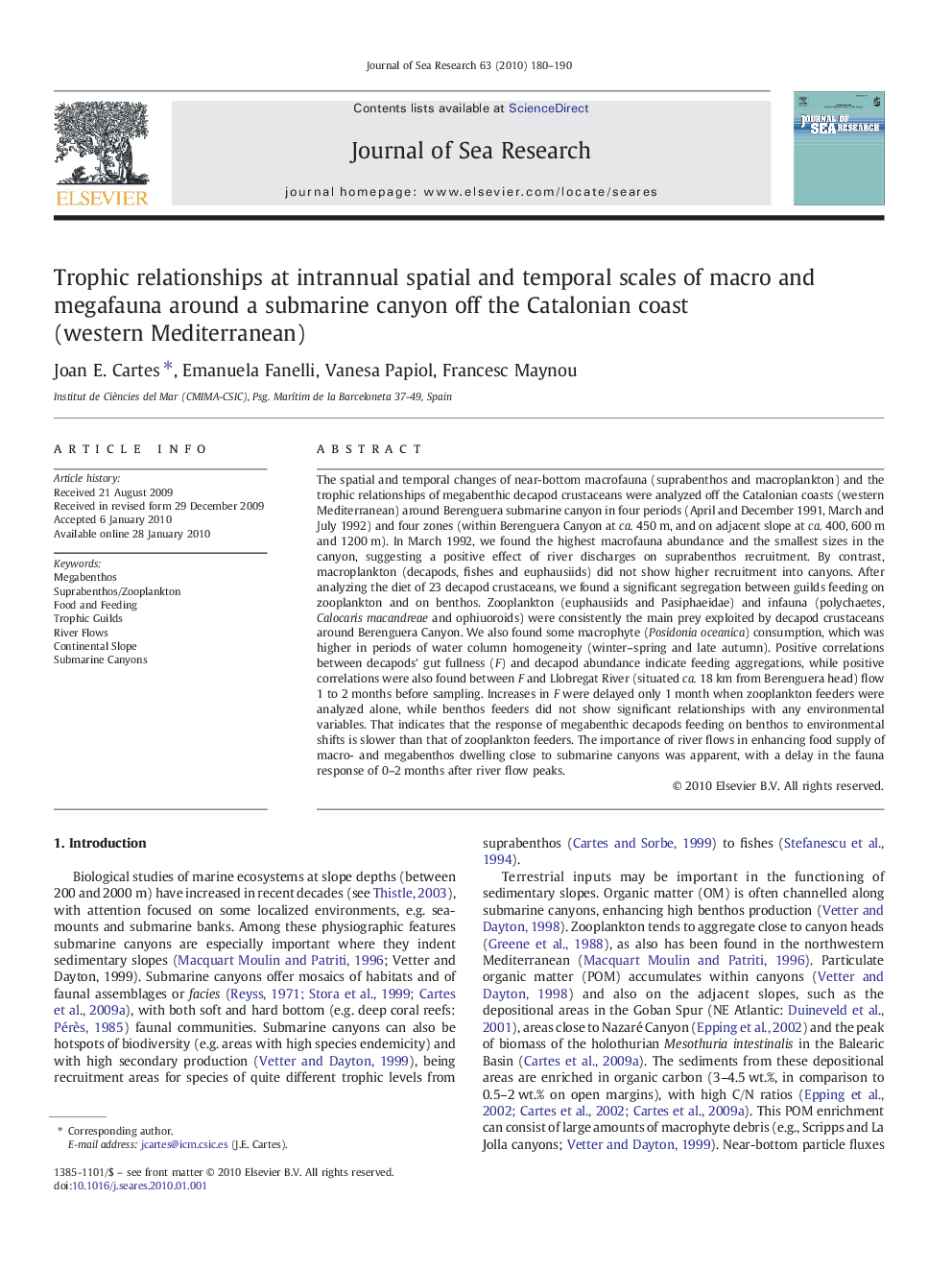| Article ID | Journal | Published Year | Pages | File Type |
|---|---|---|---|---|
| 4550227 | Journal of Sea Research | 2010 | 11 Pages |
The spatial and temporal changes of near-bottom macrofauna (suprabenthos and macroplankton) and the trophic relationships of megabenthic decapod crustaceans were analyzed off the Catalonian coasts (western Mediterranean) around Berenguera submarine canyon in four periods (April and December 1991, March and July 1992) and four zones (within Berenguera Canyon at ca. 450 m, and on adjacent slope at ca. 400, 600 m and 1200 m). In March 1992, we found the highest macrofauna abundance and the smallest sizes in the canyon, suggesting a positive effect of river discharges on suprabenthos recruitment. By contrast, macroplankton (decapods, fishes and euphausiids) did not show higher recruitment into canyons. After analyzing the diet of 23 decapod crustaceans, we found a significant segregation between guilds feeding on zooplankton and on benthos. Zooplankton (euphausiids and Pasiphaeidae) and infauna (polychaetes, Calocaris macandreae and ophiuoroids) were consistently the main prey exploited by decapod crustaceans around Berenguera Canyon. We also found some macrophyte (Posidonia oceanica) consumption, which was higher in periods of water column homogeneity (winter–spring and late autumn). Positive correlations between decapods' gut fullness (F) and decapod abundance indicate feeding aggregations, while positive correlations were also found between F and Llobregat River (situated ca. 18 km from Berenguera head) flow 1 to 2 months before sampling. Increases in F were delayed only 1 month when zooplankton feeders were analyzed alone, while benthos feeders did not show significant relationships with any environmental variables. That indicates that the response of megabenthic decapods feeding on benthos to environmental shifts is slower than that of zooplankton feeders. The importance of river flows in enhancing food supply of macro- and megabenthos dwelling close to submarine canyons was apparent, with a delay in the fauna response of 0–2 months after river flow peaks.
